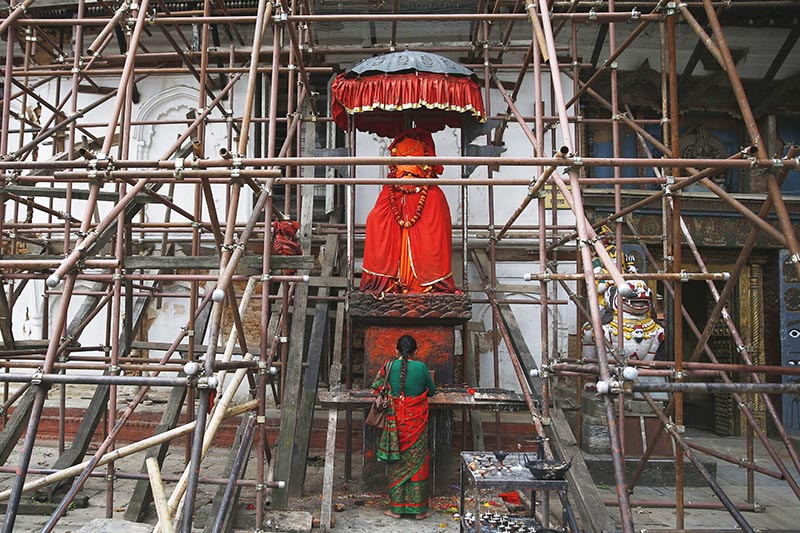UNESCO statements contradictory, says DoA
Kathmandu, January 13
Department of Archaeology has drawn the attention of UNESCO to the two letters earlier issued by UNESCO Kathmandu Office with regard to the under-construction business complex at the buffer zone of the world heritage site of Hanumandhoka Durbar Square.
DoA in a letter issued on January 9, 2017, stated that the site was located not only within the World Heritage Property but also within the area declared as Protected Monument Zone by the government. The letter mentioned that DoA wrote the letter to UNESCO with reference to the two letters earlier written by UNESCO Kathmandu Office on December 8, 2017 and December 22, 2017.
Citing the response by UNESCO Kathmandu Office to the petitioner and concerned authorities on December 22, 2017, the DoA stated,“In the letter it was mentioned that the construction site is not within the boundary of the world heritage property and it does not impact the Outstanding Universal Values of the Kathmandu Valley World Heritage Property.”
The statement contradicted its own concern about the letter issued to the builder on December 8, which had urged the company to abide by the rule of the Protected Monument Zone By-laws and the Ancient Monument Preservation Act and to respect the maximum height limit of 35 feet and avoid any adverse visual impact on the World Heritage Property.
A joint report prepared by Kathmandu Metropolitan City and Kathmandu Valley Development Authority states that the commercial complex violated the approved blueprint. It has a basement covering its entire land area of 627.98 square metres and each floor of the building is also three feet taller than the height allowed.
Construction work of the complex has been halted following an order by the KMC on November 24, 2017. UNESCO on January 10, 2018, issued a press release stating that it did not allow construction in or around a world heritage site as this was the responsibility of the concerned national authorities viz. the Kathmandu Metropolitan City and the Department of Archaeology.
“In the case mentioned by the reports, UNESCO was informed at a late stage when the basement structure had already been excavated. UNESCO therefore immediately transmitted the information to the Department of Archaeology and secretary at the culture ministry, and as the construction was already advancing, it drew attention of the building owner to existing regulations,” read a press release by UNESCO.
Locals have been staging protest against the construction of the commercial complex demanding that it abide by the rules and regulation of the country and the basement be filled since it has put the attached Malla-era treasury at the risk of collapse.
In the letter, the DoA also thanked UNESCO for cooperation in safeguarding the country’s precious cultural heritages. The letter is also sent to the Ministry of Culture, Tourism and Civil Aviation, the UNESCO World Heritage Centre, Paris, the Nepal National Commission for UNESCO and the Kathmandu Metropolitan City.
Director General at DoA Bhes Narayan Dahal said the department wrote the letter to draw the attention of UNESCO and declined to comment further.






